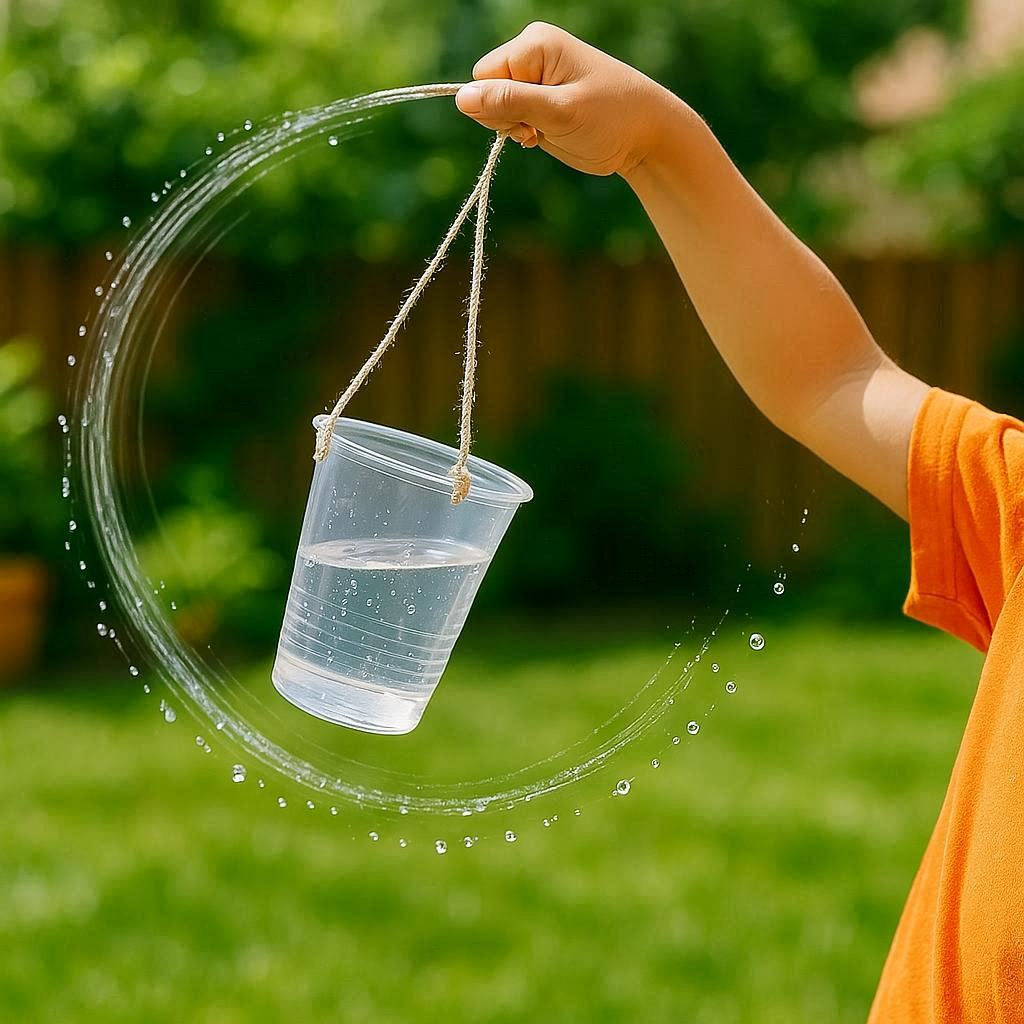Have you ever wondered how a washing machine spins water out of your clothes, or how a car manages to stay on the road when it speeds around a curve? The answer lies in a fascinating scientific concept called centripetal force. But you don’t need a fancy laboratory or expensive equipment to understand this phenomenon. With just a simple spinning water trick you can perform at home, you can witness centripetal force in action. Grab a plastic bottle, some water, and let’s dive into the physics behind this intriguing experiment!
The Science Behind the Spinning Water Trick
Centripetal force is a force that acts on a moving object, directing it towards a central point. This force is responsible for keeping objects moving in a circular path. The term “centripetal” comes from the Latin words “centrum” meaning center and “petere” meaning to seek. Essentially, centripetal force is what allows objects to travel in a curved path rather than moving off in a straight line.
Now, let’s explore how this applies to our spinning water trick. When you spin the bottle of water, the water inside is forced to move in a circular path due to the walls of the bottle. As long as the bottle continues to spin, the water keeps spinning as well, maintaining its circular motion. However, when you suddenly stop the bottle, the water continues to spin inside because it doesn’t have a force acting on it to change its motion. This is due to Newton’s First Law of Motion, which states that an object in motion will remain in motion unless acted upon by an external force.
Step-by-Step Guide to the Spinning Water Trick
Materials Needed:
- A plastic bottle with a tight-fitting lid (1.5 or 2-liter bottles work best)
- Water
- Food coloring (optional, but it makes the effect more visible)
- Paper towels or a cloth
- A sturdy handle or wooden dowel (optional)
- Tape or glue
- Safety goggles (optional but recommended)
Instructions:
- Prepare the Bottle
- Clean and dry the plastic bottle thoroughly to ensure there’s no residue that might interfere with the experiment.
- Fill the bottle about 1/4 of the way with water. The less water you use, the easier it will be to see the spinning motion. If you choose to use food coloring, add a few drops to the water and mix well for a more visually appealing effect.
- Securely fasten the lid on the bottle. Make sure it’s tightly closed to prevent any leaks.
- Add a Handle (Optional but Recommended)
- For better grip and control, you can attach a handle to the bottle. Use a wooden dowel or a sturdy plastic rod and secure it to the bottle using tape or glue. Make sure the handle is firmly attached so it doesn’t come loose while spinning.
- Spin the Bottle
- Hold the bottle by the handle or directly by the neck, making sure your grip is firm.
- Start spinning the bottle quickly and steadily. The faster you spin it, the clearer the effect will be. As the bottle spins, you’ll notice the water inside forms a vortex, swirling around the inside of the bottle.
- Stopping the Bottle
- While the bottle is spinning, quickly and abruptly stop it by holding it firmly in place. This sudden stop transfers the motion of the bottle to the water, causing the water to continue spinning inside.
- Keep the bottle stationary for a few seconds to observe the spinning water. You should notice that the water continues to spin even though the bottle has stopped.
- Stopping the Water
- To stop the water from spinning, give the bottle a slight tap on the counter or gently shake it back and forth. This provides an external force that disrupts the motion of the water, bringing it back to rest.
Tips for a Better Spinning Water Trick
- Bottle Size and Shape: The shape and size of the bottle can affect the outcome. A narrower bottle will create a more defined vortex, while a wider bottle will allow for a wider spinning motion. Experiment with different sizes to see which gives the best results.
- Water Level: The amount of water in the bottle also plays a role. Too much water and the motion may be less noticeable; too little and the effect may not be as dramatic. Aim for a balance where you can clearly see the spinning motion.
- Grip and Spin Technique: A smooth, steady spin is crucial for this experiment. Practice your spinning technique to ensure consistent results.
- Add a Little Color: Adding food coloring to the water makes the spinning motion more visible and easier to observe, especially for younger children.
Common Questions and Answers
1. Why Does the Water Keep Spinning When the Bottle Stops?
- The water continues to spin because it still has angular momentum. When the bottle stops abruptly, it transfers its motion to the water, which then continues to spin until an external force (like tapping the bottle) stops it.
- This phenomenon is a demonstration of Newton’s First Law of Motion, which states that an object in motion will remain in motion unless acted upon by an external force.
2. Is This Experiment Safe for Children?
- Yes, this experiment is generally safe, but children should be supervised by an adult, especially when handling spinning objects. Safety goggles can be worn as a precaution.
- Spilled water can make surfaces slippery, so be sure to clean up any spills immediately.
3. What If the Water Doesn’t Spin as Expected?
- If the water doesn’t spin as expected, check the following:
- Ensure the bottle is spinning fast enough. A slow spin may not create enough centripetal force for the water to spin noticeably.
- Verify that the bottle is completely sealed. Any air leaks can disrupt the motion.
- Make sure the surface is flat and stable when you stop the bottle. A wobbly surface can interfere with the experiment.
Conclusion
The spinning water trick is an engaging and educational experiment that illustrates the principles of centripetal force and Newton’s laws of motion. By following the simple steps outlined in this guide, you can create your own spinning water trick at home, providing a fun and interactive way to understand scientific concepts. Whether you’re a student, a teacher, or just someone curious about the world around you, this experiment offers a hands-on approach to learning that’s both entertaining and enlightening.
So gather your materials, grab a friend or family member, and give the spinning water trick a try. Who knows? You might just inspire a future scientist or engineer to explore the wonders of physics!
Remember, science is all around us, and sometimes the most fascinating phenomena can be observed with the simplest of experiments. Take the time to appreciate the intricate forces at play in your everyday life, and never stop seeking to understand the world around you.



